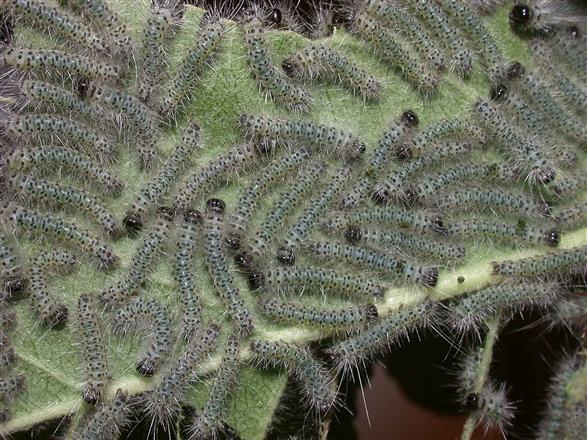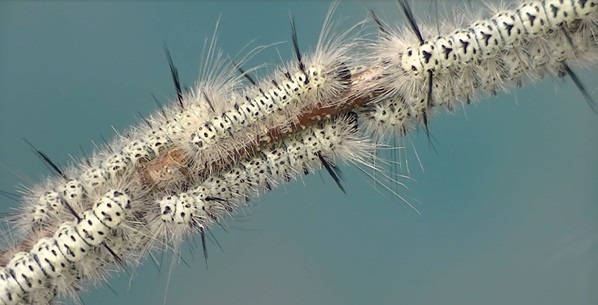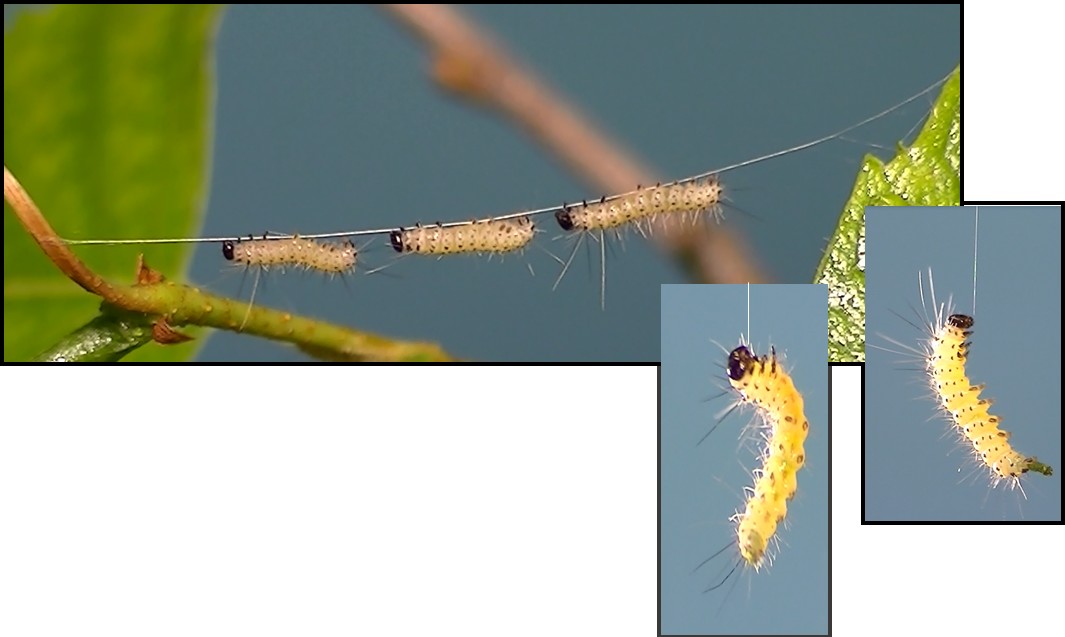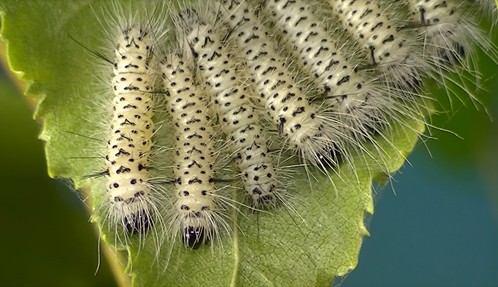Hickory Tussock Caterpillar Lophocampa caryae
The tussock caterpillar is a nomadic species that feeds on a number of hardwood trees including hickory, elm, and walnut. The female moth emerges in late spring and lays her eggs in clusters on the undersides of the leaves of the host tree. After a period of growth lasting about three months, the insect overwinters as a pupa near the ground. The larvae remain gregarious through the early instars, feeding in the open and forming conspicuous aggregations. The social behavior of the caterpillar is unstudied.
One of the advantages of sociality for caterpillars is that it allows them to pool their silk to make shelters and to enhance steadfastness on the slippery bark surfaces of host plants. The hickory tussock caterpillar is a nomadic forager and does not make three-dimensional shelters. However, the caterpillars are prolific silk spinners and laydown mats and pathways of silk on leaf and bark surfaces. As shown here, the single strand of silk that issues from a caterpillar's spinneret easily supports the weight of the caterpillar. It serves as a lifeline if the insect falls from the tree or jumps to avoid a predator. A fallen caterpillar can climb back up by twisting its body and pulling in the lifeline As shown above and in the video below, the caterpillars are excellent "tightrope" aerialists and can move from place to place over thick rope-like lines constructed from the collected strands of the succession of caterpillars that move over them.
Young caterpillars moving over the surface of a leaf they have been feeding on.
Caterpillars move from leaf to leaf over bridges thickened by the accumulation of the fine strands of silk that each caterpillar trails as it moves about.
A silk covered leaf providing secure purchase to a group of tussock moth caterpillars during a molt.
Feeding tussock caterpillars. Notice the silk strand that issues from the tip of the caterpillar's spinneret in the close-up in the last sequence. The strand serves as a lifeline if the caterpillar falls or is dislodged by a predator.




